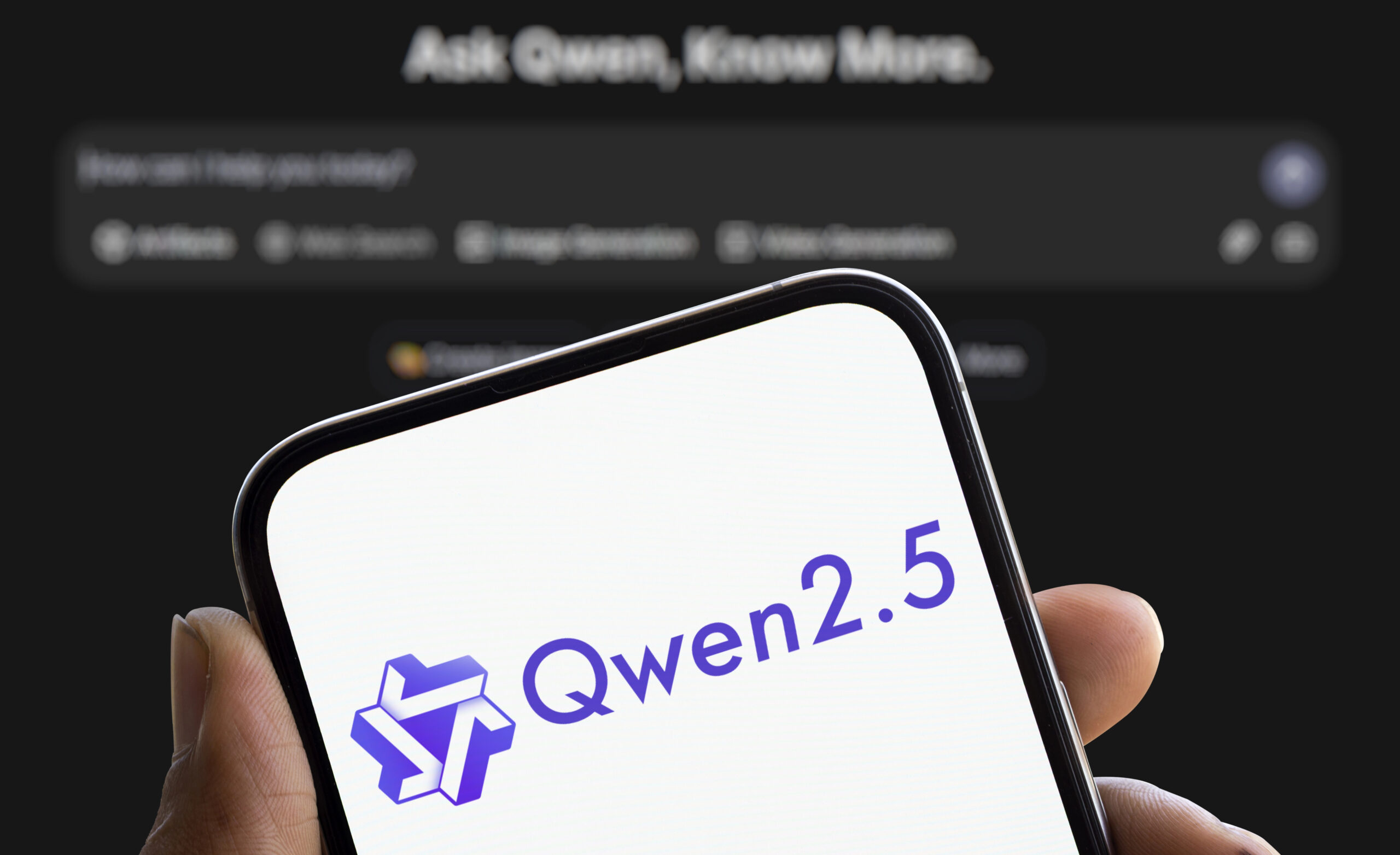In the world of artificial intelligence, advancements evolve rapidly. Keeping up with these changes can be overwhelming. Alibaba’s recent launch of Qwen 2.5-Max, however, stands out. This AI model has sparked a fierce technological arms race. It has also surpassed major competitors like DeepSeek and GPT-4o. As you explore its implications, you’ll see its impact on the AI landscape. Alibaba’s strategic move is reshaping how AI operates. With benchmark-breaking performance, Qwen 2.5-Max signifies a major leap forward. Additionally, it involves substantial infrastructure investments. This model could drastically change your interactions with technology in the near future.
Alibaba Unveils Qwen 2.5-Max: The AI Heavyweight Challenger

In a bold move that’s shaking up the AI landscape, Alibaba has unleashed its latest powerhouse model, Qwen 2.5-Max. This cutting-edge AI is not just another contender in the ring—it’s a formidable challenger that’s already outpacing some of the most renowned models in the industry.
Benchmark-Busting Performance
Qwen 2.5-Max isn’t just talking the talk; it’s walking the walk with impressive benchmark results. Alibaba claims their new model is outperforming competitors on critical tests like Arena-Hard and MMLU-Pro. These aren’t just any benchmarks—they’re the gold standard for measuring an AI’s reasoning and knowledge application skills.
Strategic Timing and Market Positioning
The release of Qwen 2.5-Max couldn’t be more strategic. Launched during the Lunar New Year, a time of new beginnings, Alibaba is signaling its intent to dominate the AI market. This timing isn’t just symbolic; it’s a calculated move to capture attention and reassert Alibaba’s technological prowess in the face of growing competition, particularly from rising star DeepSeek.
Ecosystem Expansion and Investment
Alibaba isn’t putting all its eggs in one basket. Alongside Qwen 2.5-Max, they’ve introduced Qwen2.5-Omni-7B, an open-source model designed for edge devices. This versatile AI can handle various inputs, from text to video, making it a valuable tool for developers and potentially broadening Alibaba’s AI ecosystem. Backing these releases is a staggering investment pledge of over 380 billion yuan into AI infrastructure over the next three years, underlining Alibaba’s commitment to staying at the forefront of AI innovation.
Qwen 2.5-Max vs. GPT-4o and DeepSeek-V3: Benchmarking the AI Titans
As the AI arms race intensifies, Alibaba’s Qwen 2.5-Max has emerged as a formidable contender, challenging industry giants like OpenAI’s GPT-4o and China’s rising star, DeepSeek-V3. Let’s delve into how these AI powerhouses stack up against each other in key benchmarks.
Arena-Hard: Testing Complex Reasoning
Qwen 2.5-Max has reportedly outperformed its rivals in the Arena-Hard benchmark, which evaluates an AI model’s ability to handle complex reasoning tasks. This achievement showcases Alibaba’s commitment to developing models capable of tackling intricate problem-solving scenarios, a crucial aspect in advancing AI capabilities.
MMLU-Pro: Mastering Multitask Language Understanding
Another area where Qwen 2.5-Max shines is the MMLU-Pro benchmark. This test assesses a model’s proficiency in multitask language understanding across various domains. Alibaba’s latest offering has demonstrated superior performance, indicating its versatility and potential for real-world applications.
Comparative Strengths and Specializations
While Qwen 2.5-Max boasts impressive benchmark results, it’s essential to consider the unique strengths of GPT-4o and DeepSeek-V3. OpenAI’s model is known for its broad knowledge base and nuanced language understanding, while DeepSeek-V3 has gained attention for its cost-efficiency and rapid improvement trajectory.
As the AI landscape evolves, these benchmarks serve as critical indicators of progress. However, real-world performance and adaptability will ultimately determine which model gains widespread adoption and shapes the future of artificial intelligence.
Alibaba’s Open-Source Powerhouse: Qwen2.5-Omni-7B for Edge Devices
In a strategic move to bolster its AI ecosystem, Alibaba has unveiled Qwen2.5-Omni-7B, an open-source model designed specifically for edge devices. This versatile powerhouse is set to revolutionize the way we interact with AI in our daily lives, bringing advanced capabilities right to our fingertips.
Multi-Modal Mastery
Qwen2.5-Omni-7B stands out with its ability to handle a diverse range of inputs. From text and images to audio and video, this model demonstrates unprecedented versatility. This multi-modal approach opens up a world of possibilities for developers, enabling them to create more intuitive and responsive applications that seamlessly integrate various forms of data.
Edge Computing Revolution
By optimizing Qwen2.5-Omni-7B for edge devices, Alibaba is pushing the boundaries of what’s possible in local AI processing. This means faster response times, enhanced privacy, and reduced reliance on cloud infrastructure. Imagine smart home devices that understand and respond to voice commands instantly, or mobile apps that can process complex visual information without sending data to remote servers.
Developer-Friendly Ecosystem
Alibaba’s decision to make Qwen2.5-Omni-7B open-source is a game-changer for the developer community. This move not only fosters innovation but also accelerates the adoption of AI technologies across various industries. Developers now have access to a powerful tool that can be customized and integrated into a wide range of applications, from smart wearables to industrial IoT devices.
Alibaba’s Massive AI Investment: Fueling the Next Wave of Innovation
Alibaba’s recent announcement of a staggering 380 billion yuan investment in AI infrastructure over the next three years marks a pivotal moment in the global artificial intelligence landscape. This monumental financial commitment underscores the tech giant’s determination to maintain its competitive edge and accelerate innovation in the rapidly evolving AI sector.
Strategic Infrastructure Expansion
The bulk of this investment will likely be channeled into expanding and upgrading Alibaba’s data centers, supercomputing facilities, and networking infrastructure. These enhancements are crucial for supporting the development and deployment of increasingly sophisticated AI models like Qwen 2.5-Max. By bolstering its technological backbone, Alibaba aims to create a robust foundation for future AI breakthroughs and applications.
Fostering AI Talent and Research
A significant portion of the investment is expected to attract top-tier AI talent and fund cutting-edge research initiatives. This focus on human capital and innovation will be instrumental in driving Alibaba’s AI capabilities forward, potentially leading to groundbreaking advancements in areas such as natural language processing, computer vision, and machine learning algorithms.
Ecosystem Development and Integration
Alibaba’s investment strategy also emphasizes the importance of building a comprehensive AI ecosystem. This includes developing tools and platforms that facilitate the integration of AI technologies across various industries and applications. By creating a more accessible and user-friendly AI environment, Alibaba aims to accelerate the adoption of AI solutions in sectors ranging from e-commerce and healthcare to finance and manufacturing.
The Intensifying AI Arms Race in China: Implications and Outlook
The launch of Alibaba’s Qwen 2.5-Max has ignited a fierce competition in China’s AI landscape, with far-reaching implications for the global tech industry. This development signals a new phase in the ongoing AI arms race, as Chinese tech giants and startups vie for supremacy in this cutting-edge field.
Domestic Competition Heats Up
Alibaba’s strategic move directly responds to the rising threat from DeepSeek, a nimble startup that has been making waves with its high-performance, cost-effective AI models. This intensifying rivalry is driving rapid innovation and pushing the boundaries of what’s possible in AI technology.
Global Ramifications
The advancements in Chinese AI capabilities are not just a domestic affair. As models like Qwen 2.5-Max outperform international benchmarks, they’re challenging the dominance of Western tech giants like OpenAI. This shift could reshape the global AI landscape, potentially altering the balance of technological power.
Future Outlook
With Alibaba’s massive investment in AI infrastructure and the release of open-source models, we can expect an acceleration in AI development and adoption across various sectors. This could lead to:
Increased competition and innovation in AI-driven products and services
Greater accessibility to advanced AI tools for developers and businesses
Potential challenges in AI governance and ethical considerations as capabilities rapidly expand
As the AI arms race intensifies, it will be crucial to monitor how these developments impact global tech dynamics and shape the future of artificial intelligence.
Final Analysis
Alibaba’s launch of Qwen 2.5-Max marks a milestone in the AI arms race. This new model is powerful. It demonstrates Alibaba’s commitment to maintaining a competitive edge. Additionally, Alibaba’s strategic moves in open-source development and infrastructure investment are significant. The rapid advancements in China’s AI sector are driving innovation. The competition is fierce, pushing progress at an unprecedented pace. These developments have global implications, reaching far beyond China. As breakthroughs continue, transformative changes across industries are inevitable. These changes will affect daily life as well. Stay informed and prepared. The AI revolution is already here and reshaping the world.
More Stories
Adobe Project Indigo Reinvents iPhone Photography with Computational Precision
Adobe Project Indigo, stands poised to redefine the boundaries of what’s possible on an iPhone. As a sophisticated camera app, it leverages state-of-the-art computational techniques to elevate your photographic experience beyond mere snapshots.
OpenAI Teams Up with Jony Ive to Build New AI Device
OpenAI has partnered with renowned designer Jony Ive on an ambitious $6.5 billion project. This collaboration seeks to develop a revolutionary AI device unlike anything currently available.
Philippines Launches Comprehensive Crypto Reporting Framework for Financial Transparency
CARF mandates that domestic cryptocurrency platforms and intermediaries report cross-border digital asset transactions.
Threads Strengthens Decentralized Identity with Federated Feed and Profile Discovery
Meta introduces federated feed and profile discovery features to strengthen decentralized identity in Threads.
Facebook Shifts All Videos to Reels Format in Major Platform Overhaul
Facebook is making a bold move to redefine its video-sharing landscape as it transitions all videos into the Reels format.
Circumvent Lands $6M To Scale AI Cloud Security Platform
Circumvent, an innovative cybersecurity startup has secured $6 million in seed funding to boost its mission in cloud infra security.


